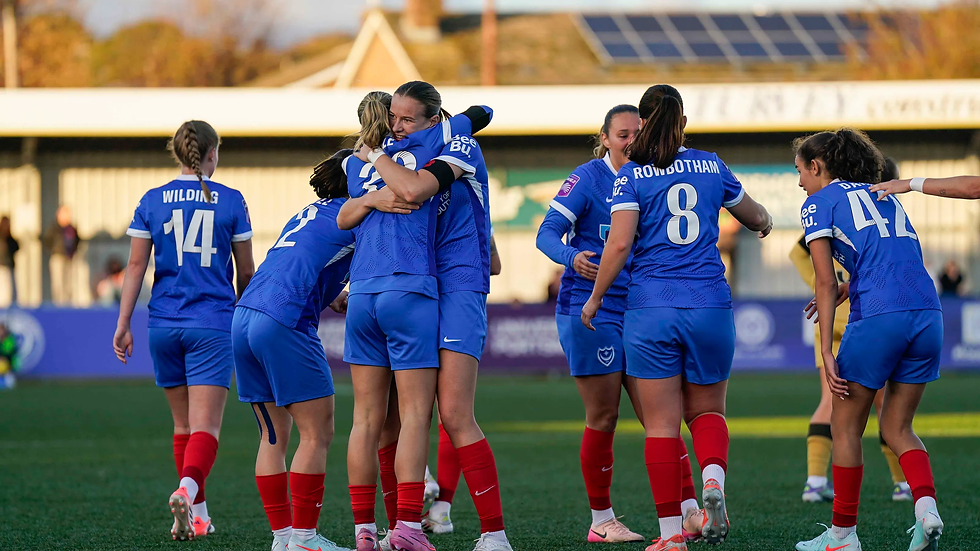The Women's Copa América 2025 is underway - and it already feels like a Turning Point
- Aimee

- Jul 22
- 4 min read
For decades, the Women's Copa América has quietly shaped the path of South American women's football. But now that the 2025 edition is underway, the tournament feels different. Bigger. Louder. More competitive. More meaningful. With qualification spots on the line and a continent's pride at stake, this year's tournament isn't just about silverware - it's about proving who belongs on the world stage. It also demands more recognition. And from the first few match days, it's clear: the gap is closing, the drama is building, and South America's next era is here.

A Legacy of Dominance - and a New Generation Challenging It
Since it's start in 1991, the Copa América Femenina has been dominated by Brazil, who have lifted the trophy eight times. But in 2022, Colombia pushed them to the limit in a hard-fought final. Now in 2025, lower-ranked teams are stepping up, ready to fight for the title. The matches so far have shown increased competitiveness across the board - underdogs are going toe-to-toe with the favourites. Even Brazil isn't untouchable anymore. In past editions, early games were often blowouts. This year? Not anymore. Teams like Paraguay, Venezuela, and even Bolivia are showing up with organised football and fearless energy.
The Stakes: More Than Just a Trophy
Winning this tournament means everything - but so does securing a spot at the World Cup. For many of these teams, qualification can be the difference between being remembered or forgotten.
Teams making early noise.
Colombia came into the tournament with momentum - and they've looked sharp from the start. Lina Caicedo continues to shine and prove herself as one of the world's brightest young stars. This is a team full of flair, confidence, and maturity beyond its years - undeniably a serious title contender.
Brazil remain unbeaten, but they're no longer invincible. Stars like Kerolin have taken centre stage, yet the post-Marta era is still under scrutiny as the team works to find consistency and identity.
Argentina have been patchy so far, but they're grinding out results. Betina Soriano is in form, and the midfield looks more balanced than in previous years - giving them a stronger foundation to build on.
Chile are as dependable as ever with Antonia Canales stepping up in goal, but this year they've added a sharper attacking edge that makes them more dangerous going forward.
Underdogs Stepping Up
Paraguay have impressed with their structure and discipline, earning a key win against Bolivia and showing they're not just here to participate - they're here to compete.
Venezuela, powered by Deyna Castellanos, are still in the mix despite an inconsistent start, and remain a threat with her quality up front.
Bolivia, long considered one of the region's weakest sides, are showing signs they could turn heads and prove they belong.
You can no longer assume three points in this tournament. Every match is a battle and underdogs are capable of stealing results from teams expected to dominate. That's new - and that's exciting.
Players Lighting Up the Tournament.
Linda Caicedo (Colombia) - Already the face of the tournament. Electrifying in every game, she combines flair, intelligence and fearlessness at just 20 years old.
Kerolin (Brazil) - Dynamic, fearless, and relentless in attack. Her pace and directness are unlocking defences and giving Brazil a modern edge up front.
Fanny Godoy (Paraguay) - One of the most underrated midfielders in the tournament. Her vision, work rate, and control in the middle are key to Paraguay's structure.
Pamela Cabezas (Chile) - Calm and commanding between the posts, she's proving to be a crucial last line of defence in Chile's tighter, more organised back line.
Deyna Castellanos (Venezuela) - Venezuela's heartbeat and biggest threat. Her vision, leadership and ability to create magic in tight spaces make her the engine of La Vinotinto's attack.
Tactics, Rivalries, and Style Evolution.
This is the most tactically advanced Copa América we've seen. It's no longer just about flair - there's strategy, structure, and serious coaching behind every side. Managers are also showing more trust in young players, giving the next general valuable experience on the biggest stage. It's a sign of growth - not just in talent, but in belief.
Off the Pitch: Growing Fanbases and Changing Attitudes.
This isn't just a football tournament - it's a movement. And the players know it. More fans are showing up to watch their national teams compete of this stage. But there's still a long way to go in terms of visibility - especially on social media, where coverage is often overshadowed by events like the Women's Euros. That needs to change, because South American women's football deserves the spotlight.
What's Next?
There's still a lot to play for, with the group stage still unfolding and the biggest games yet to come. Anything can happen - any team could rise from the bottom and go all the way. Whether the trophy end up in familiar hands or not, the message is clear: South American women's football is evolving fast - and the Copa América is it's proving ground.




Comments